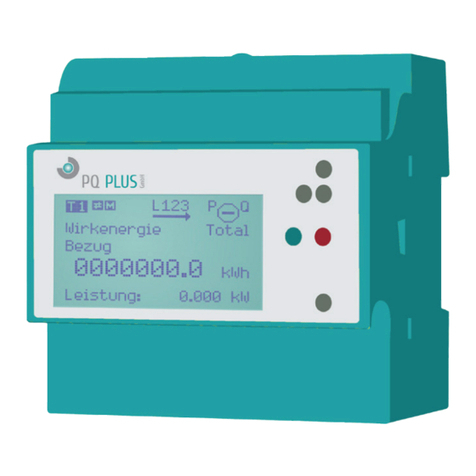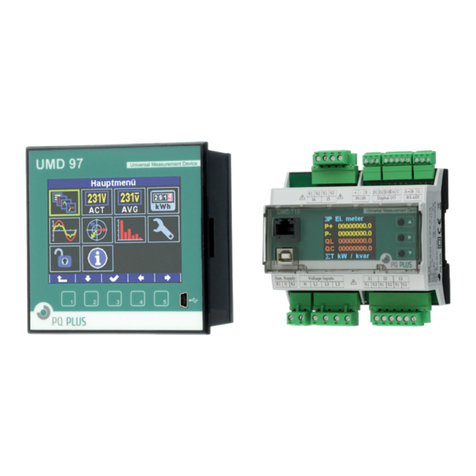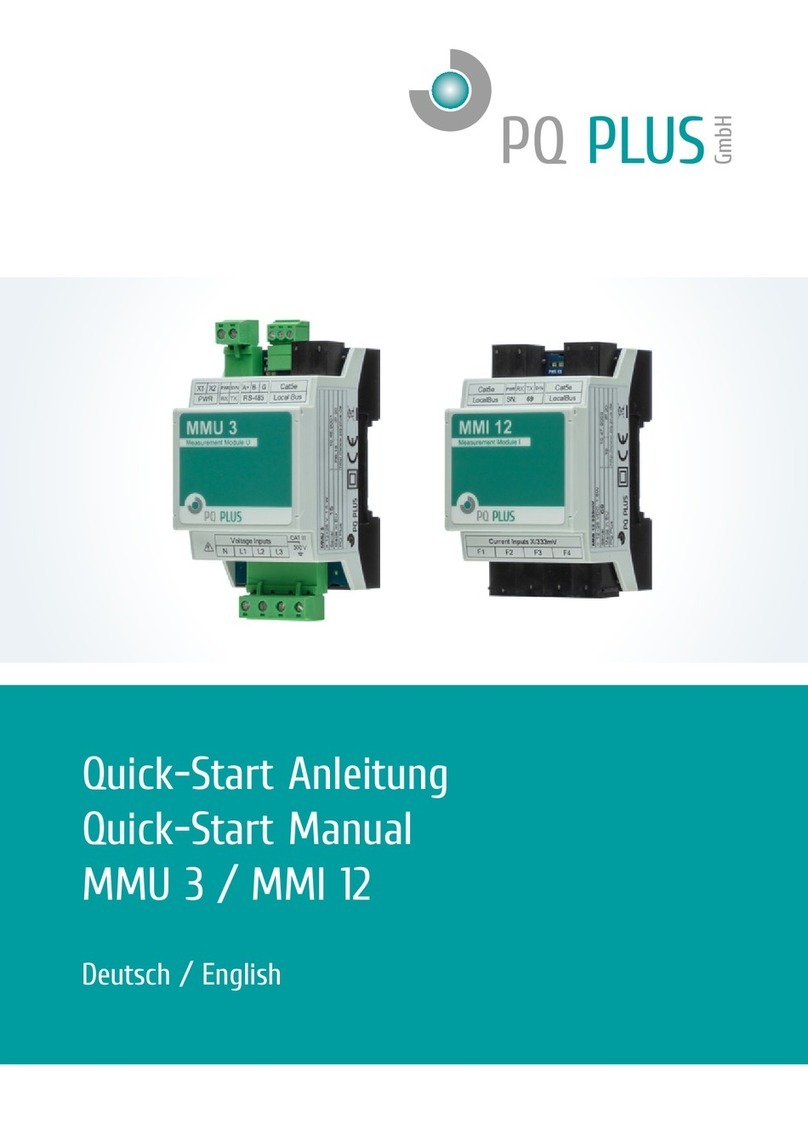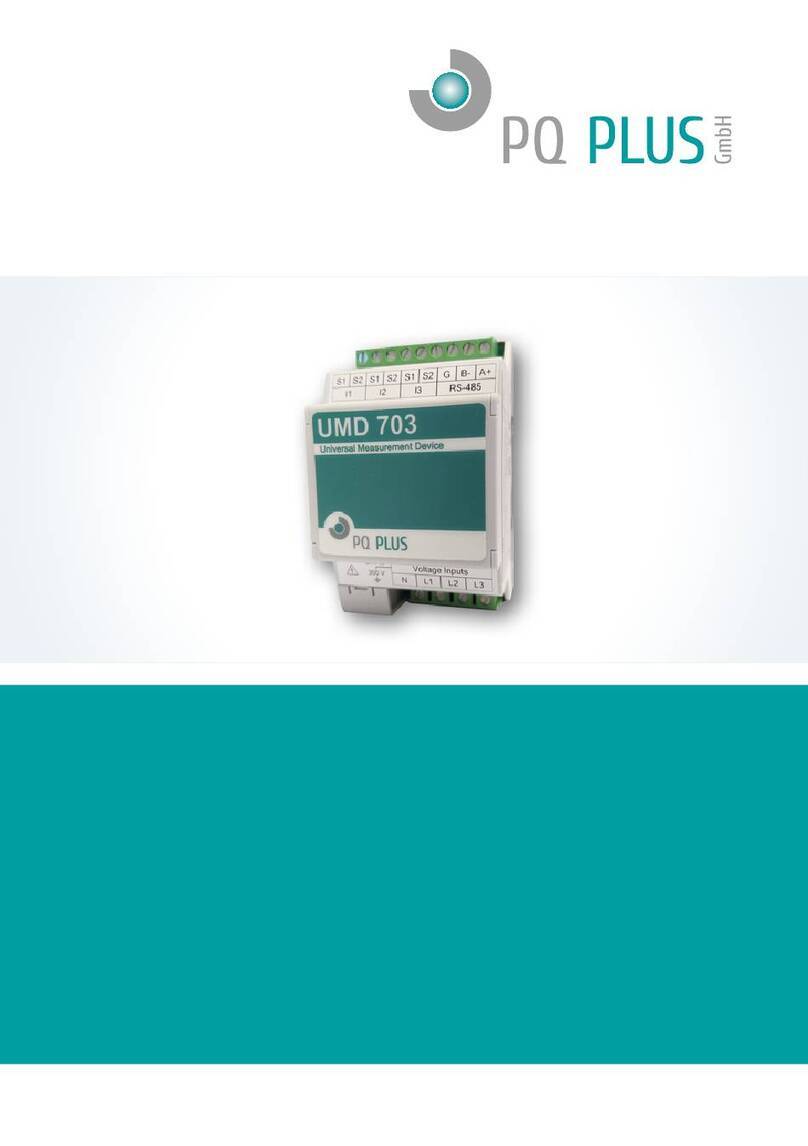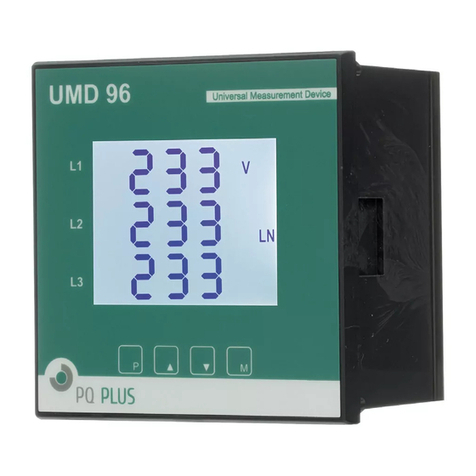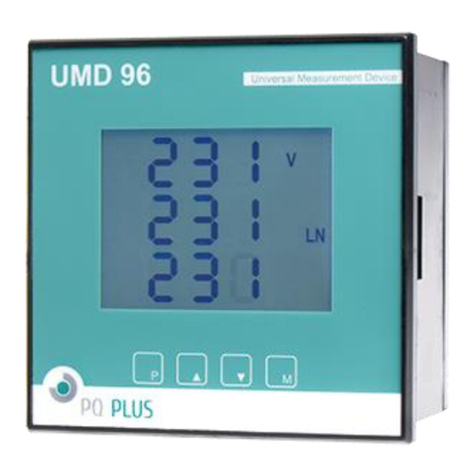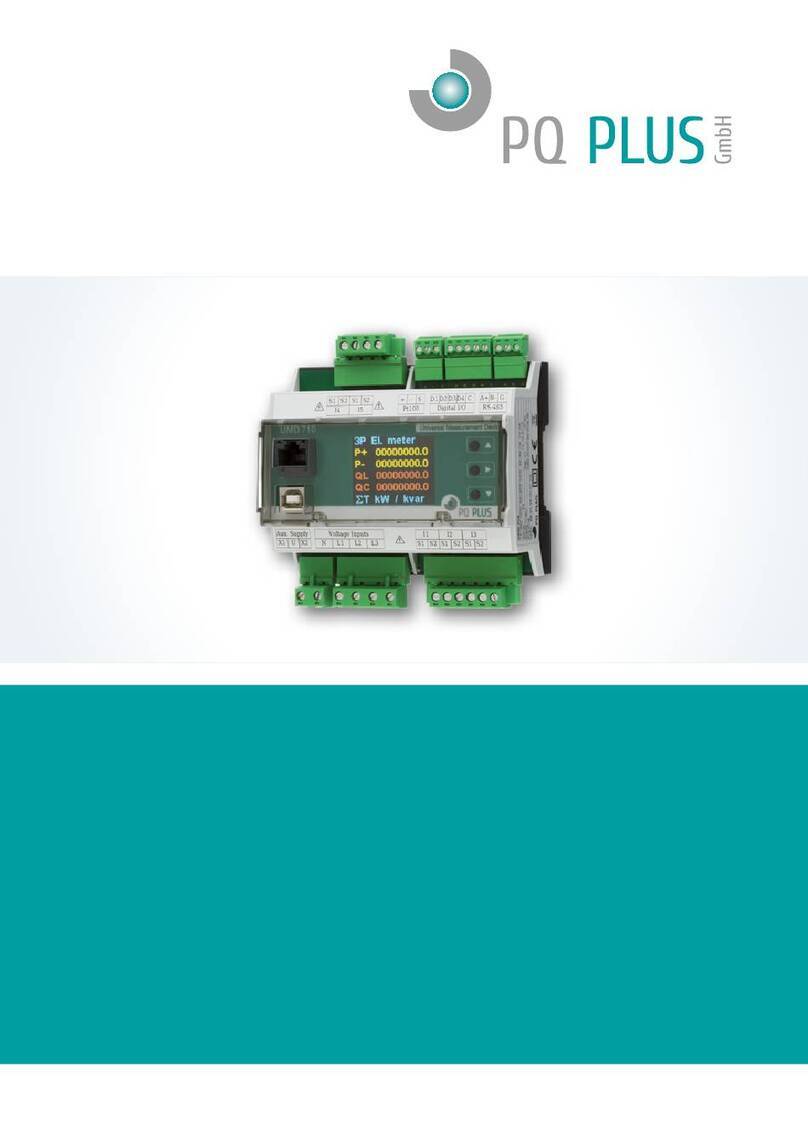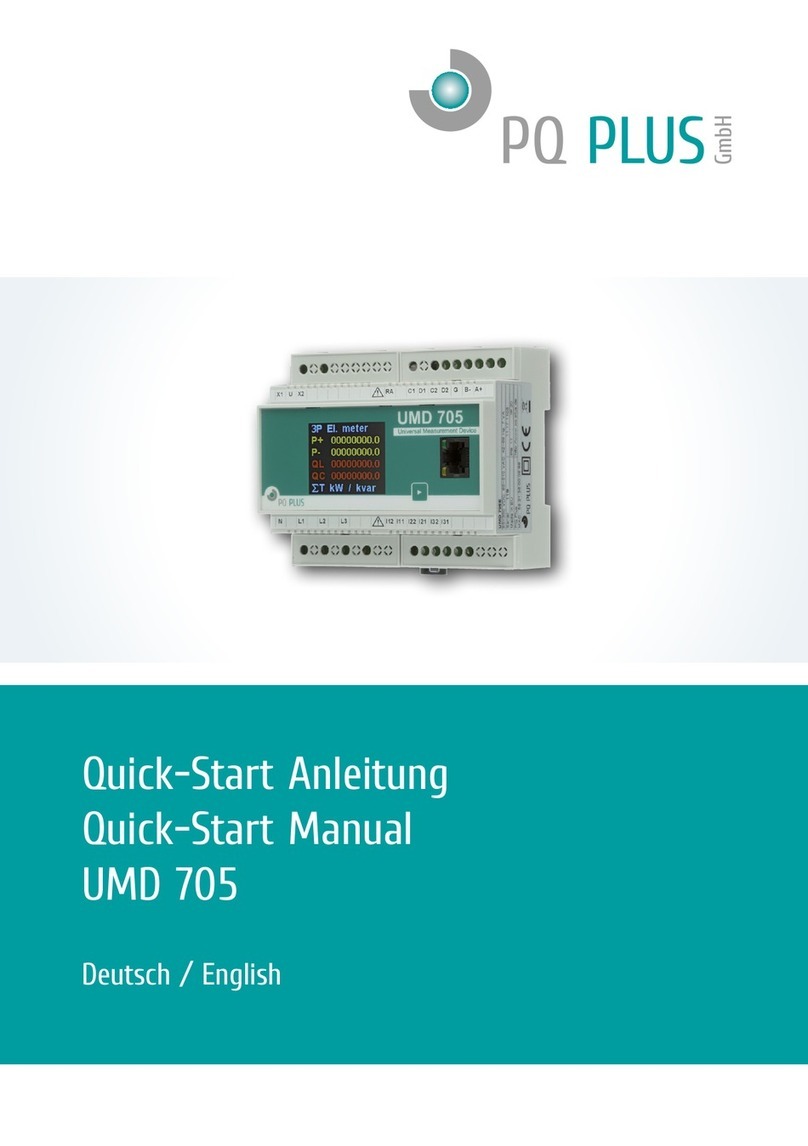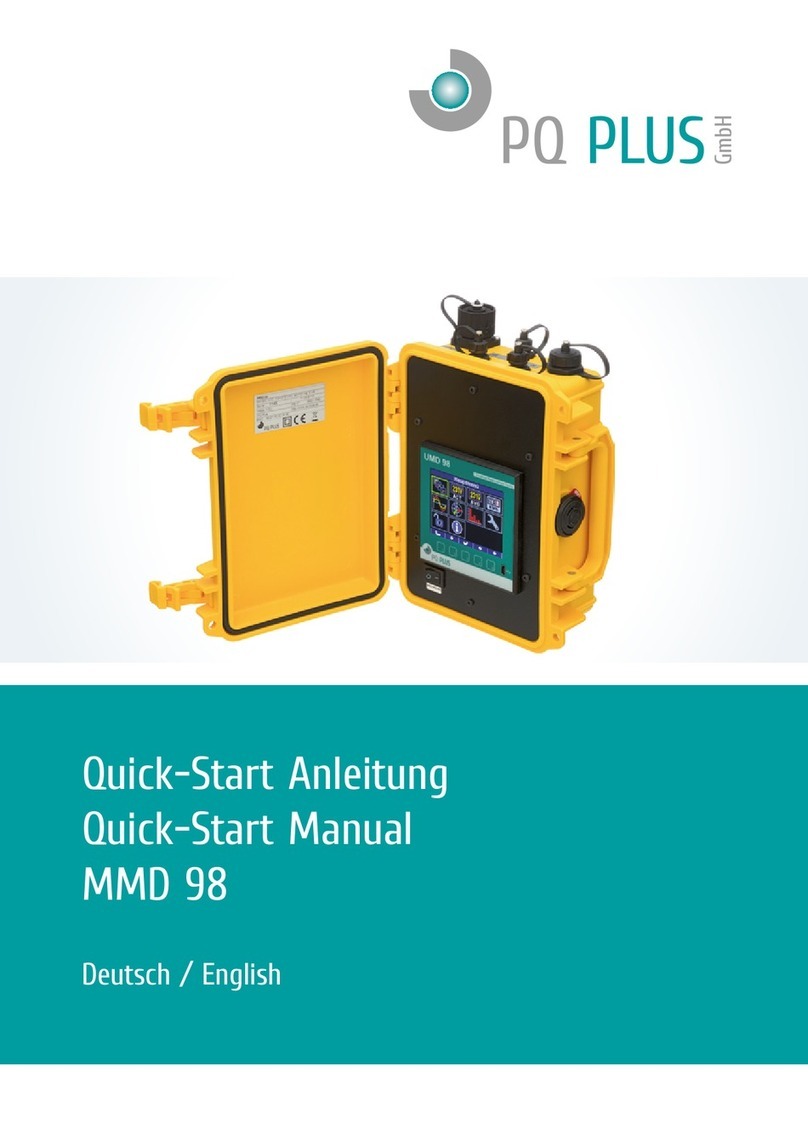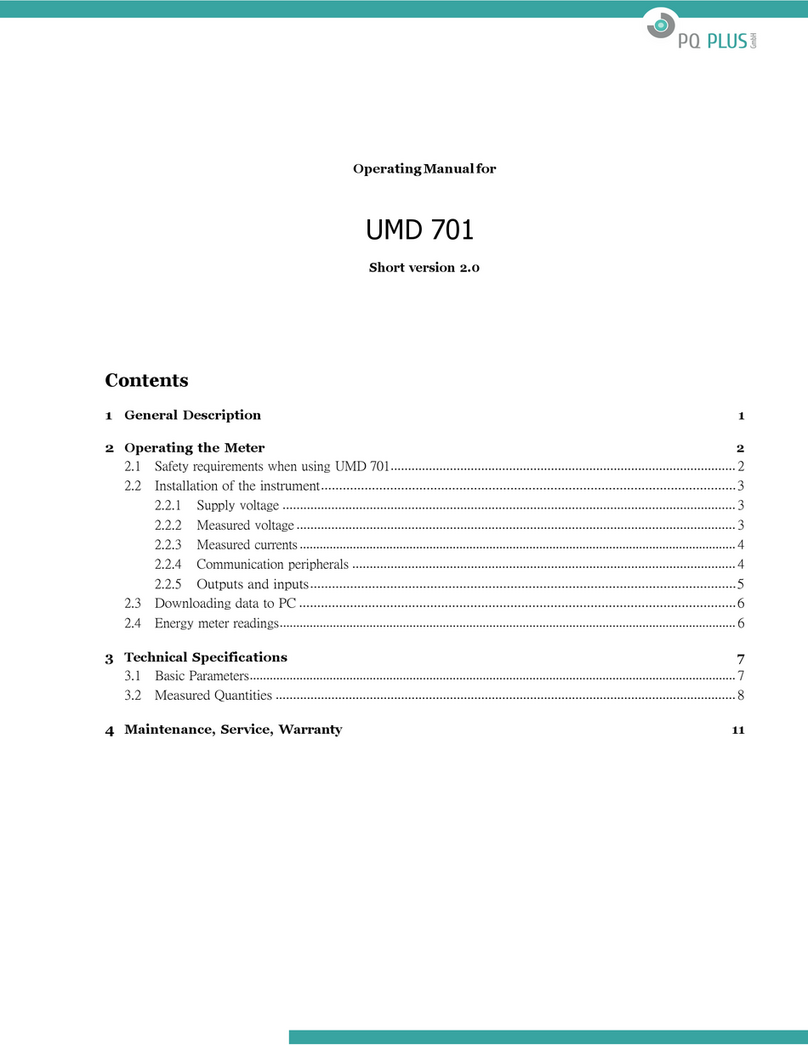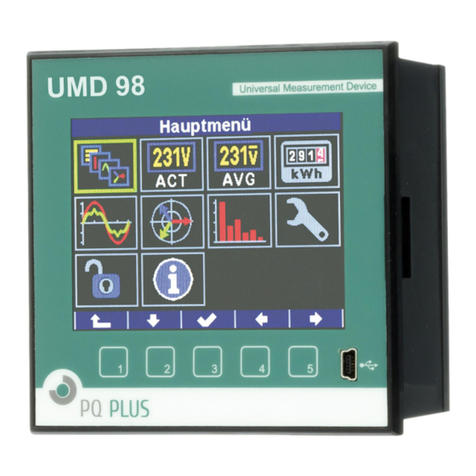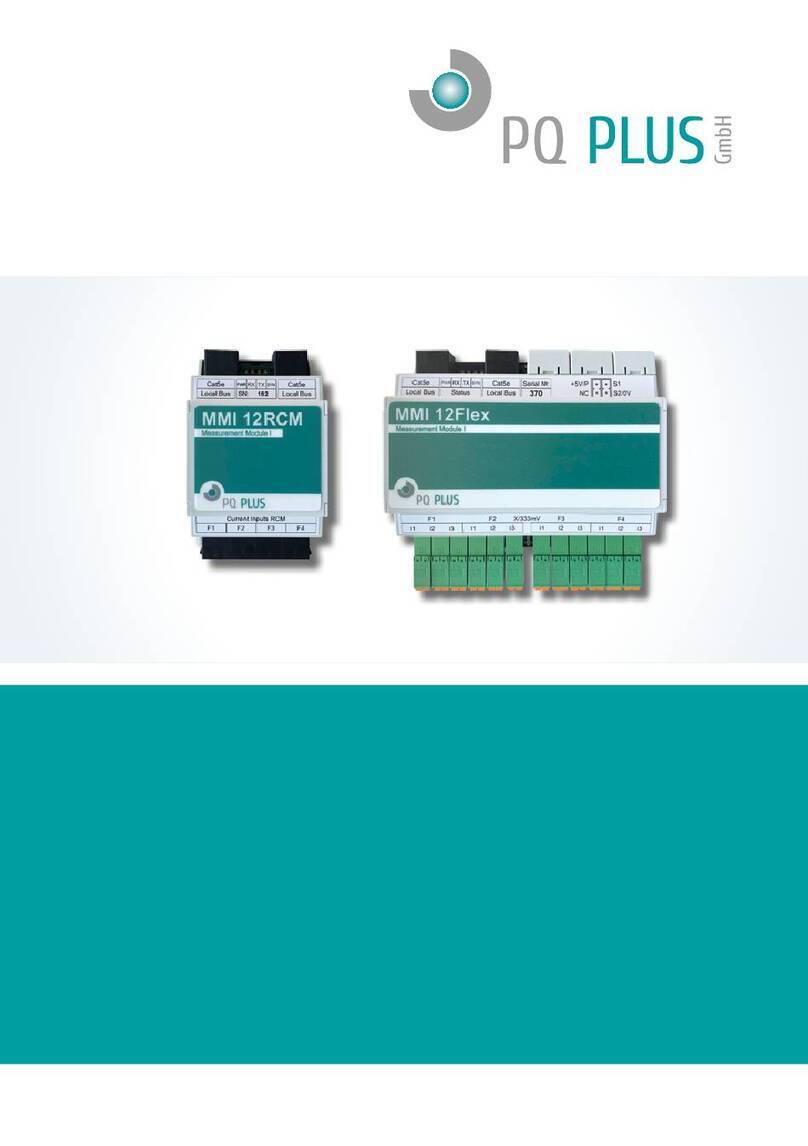
Short Manual | UMD 807 3
Installation
1.1 Physical
The instrument is built in a plastic box to be installed in a distribution board panel. The instrument’s position must be fixed with
locks.
Natural air circulation should be provided inside the distribution board cabinet, and in the instrument’s neighbourhood, especially
underneath the instrument, no other instrumentation that is source of heat should be installed.
1.1
1.2 Instrument Connection
1.1.1 Power Supply
The instrument requires an AC or DC voltage power supply as specified in technical parameters. The supply inputs are
separated from other circuits of the instrument.
It is necessary to connect an auxiliary supply voltage in the range as declared in technical specifications table to the terminals
AV1 (No. 9, L) and AV2 (No.10, N). In case of DC supply voltage the polarity of connection is generally free, but for maximum
electromagnetic compatibility the grounded pole should be connected to the terminal AV2.
The supply voltage must be connected via a disconnecting device (switch - see installation diagram). It must be situated directly
at the instrument and must be easily accessible by the operator. The disconnecting device must be labelled as the
disconnecting device of the equipment. A C-character double circuit breaker at the nominal value of 1A may be used for the
disconnecting device; however its function and position must be clearly marked (symbols „O" and „I" according to EN 61010 –
1). If one of the supply signals is neutral wire N (or PEN) usually a single breaker in the line branch is sufficient. If a switch and
fuse is used, the T1A (delayed) type is recommended.
1.1.2 Measured Voltages
Connect measured voltages in wye (star), delta or Aron configuration to terminals VOLTAGE / N (No. 11), U1 (No. 12), U2
(No. 13), and U3 (No. 14). The Nterminal stays free at delta and Aron connections.
Phase rotating direction is free.
Types of connections are stated in the following table.
It is advisable to protect the supply leads by 1A safety fuses (F1A type, for example).
The type of voltage and currents connection must be entered in Installation parameters : the code shows the amount of
connected phases, 3Y means three-phase connection in wye (star), 3D in delta. 3A means Aron connection. For setup 1Y the
instrument measures phase L1 only and 3-phase values are simulated.
Tab. 2.1: Connection of the measured voltages – VOLTAGE group of terminals
Terminal Type of connection
VOLTAGE wye-star (Y) wye-star (Y) wye-star (Y)
U1L1-phase voltage L1-phase voltage L1-phase voltage
U2L2-phase voltage L2-phase voltage L2-phase voltage
U3L3-phase voltage L3-phase voltage L3-phase voltage
UNneutral wire voltage neutral wire voltage neutral wire voltage
In the case of indirect connection via the measuring voltage transformers, it is necessary to enter this matter (connection Mode)
and the values of the VT ratios during the setup of the instrument.
The maximum cross section of the conductors to the terminal panels is 2.5 mm2.
1.1.3 Measured Currents
The instruments are designed for indirect current measurement via external CTs only. Proper current signal polarity (S1 & S2
terminals) must be observed. You can check the polarity by the sign of phase active powers on the instrument display (in case
of energy transfer direction is known, of course). The CT-ratio must be set. in the Installation group of parameters (see below).
The I2 terminals stay free in case of the Aron (A) connection.
To get better precision when using overweighted CTs, you can apply more windings of measured wire through the
transformer. Then you must set the multiplier parameter (see below). For standard connection with 1 winding, the
multiplier must be set to 1.
The current signals from 5A or 1A (or 0.1A for the „X/100mA“ models) instrument current transformers must be connected to the
CURRENT connector terminal pairs I11 – I12, I21 – I22, I31 – I32 (No. 1 ÷ 6).
A particular connector is provided with a screw lock to prevent an accidental pullout and possible unwanted disconnection of the
current circuit.
A connection cable maximum cross section area is 2.5 mm2.
